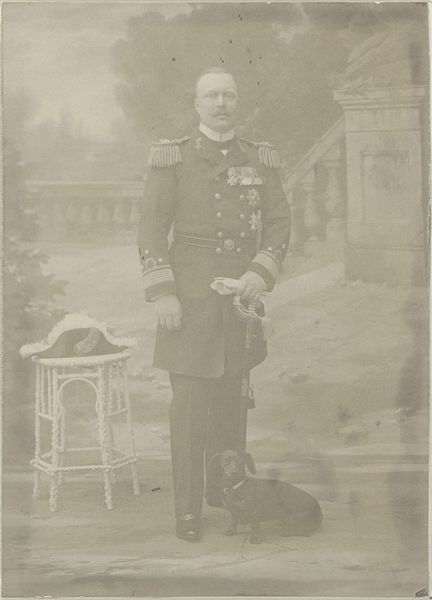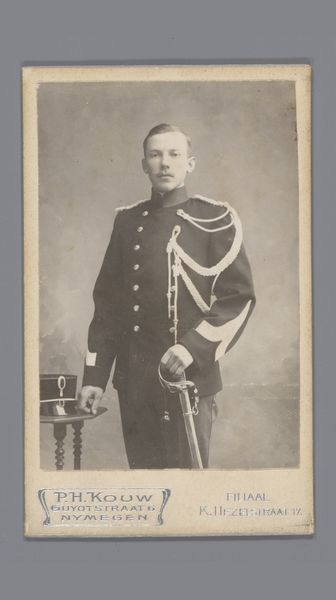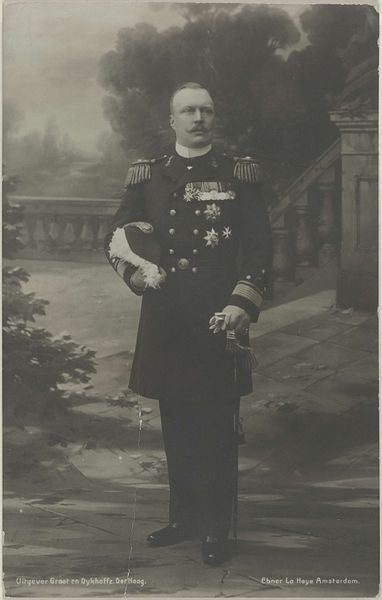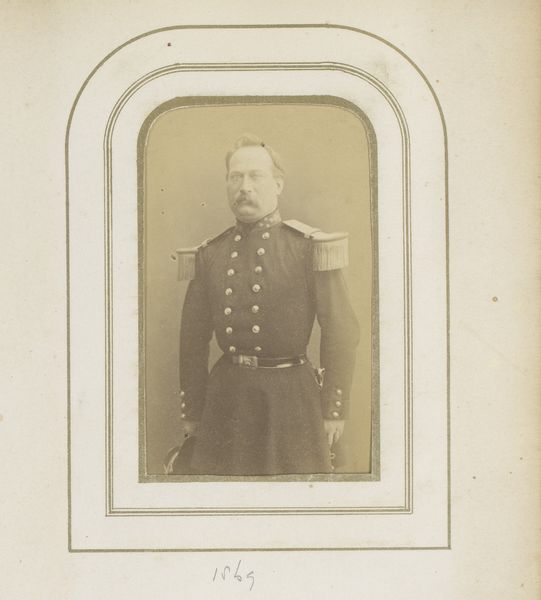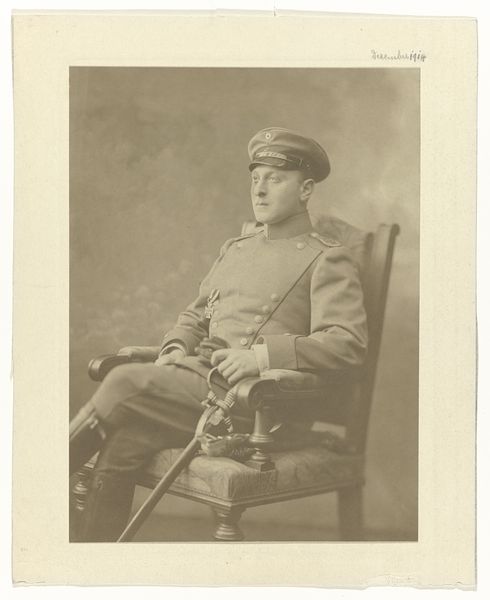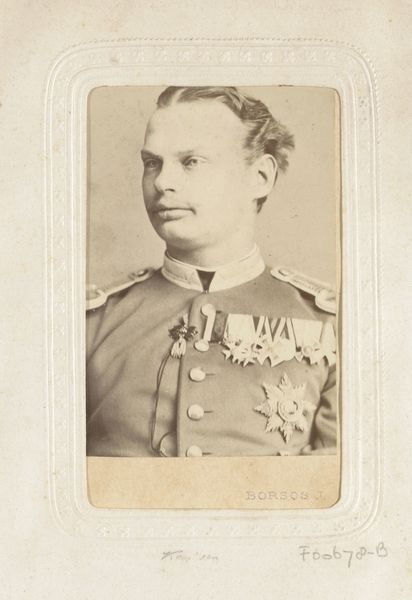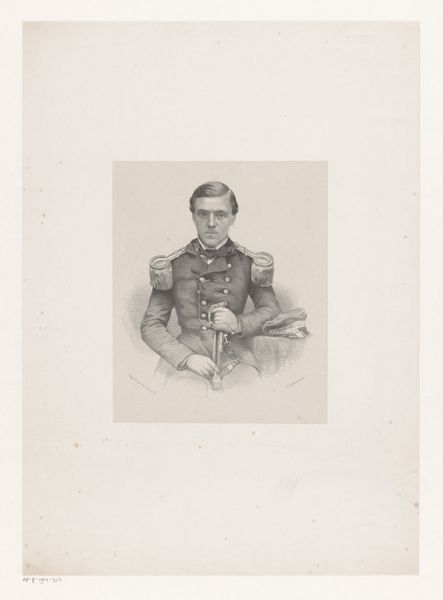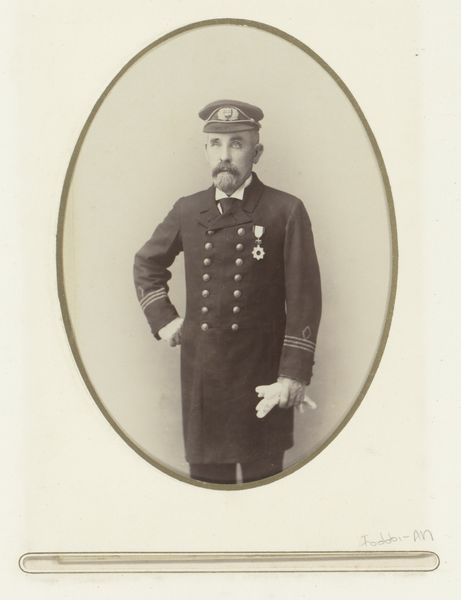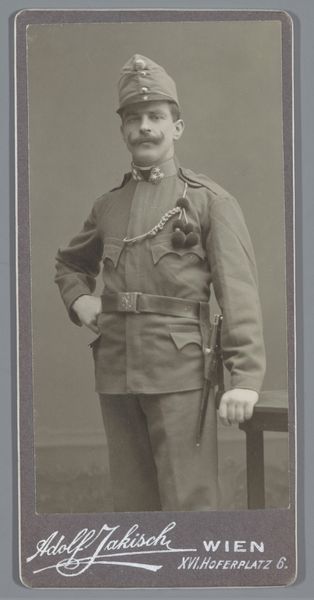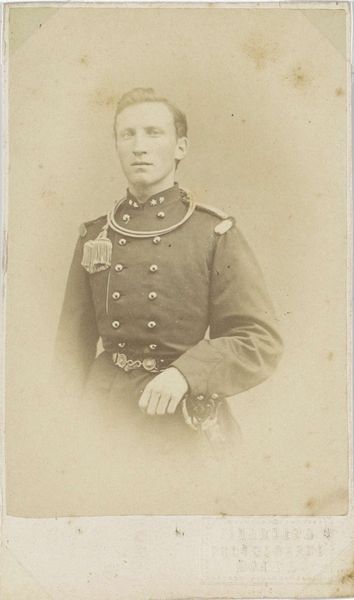
#
photo restoration
#
caricature
#
charcoal drawing
#
charcoal art
#
portrait reference
#
unrealistic statue
#
framed image
#
portrait drawing
#
portrait art
#
fine art portrait
Dimensions: height 277 mm, width 184 mm, height 338 mm, width 230 mm
Copyright: Rijks Museum: Open Domain
Curator: This is a portrait of Prince Hendrik of the Netherlands, rendered in 1901 by Ferdinand Robert Ebner. The sepia tones lend a somber yet regal air. Editor: Immediately, I’m struck by the weightiness of it, literally and figuratively. The uniform seems stiff, heavy with braid and ornament. The almost monochromatic palette only intensifies that sensation of formality, perhaps even rigidity. Curator: The marine uniform, adorned with medals and braiding, communicates power, authority, and national pride—values intrinsically linked to monarchy, particularly during the early 20th century when naval strength equated to colonial reach. It echoes Dutch maritime history and their colonial empire. Editor: Yes, the symbols are loud and clear! Structurally, the portrait uses a shallow depth of field; the background seems vague, almost irrelevant, compared to the razor-sharp focus on the prince's figure. This compositional choice amplifies the sense of the individual's importance—isolation, even. Curator: Observe how the backdrop incorporates what appears to be classical columns, alluding to enduring power, perhaps consciously linking the prince to a heritage of European royal continuity. Editor: I appreciate how the photographic process—or possibly its age—lends a certain textural quality. You can almost feel the texture of the paper, which provides a quiet contrast to the prince’s polished image. Curator: The hand resting on the naval cap hints at service, but his expression is somewhat inscrutable. This visual contrast opens intriguing possibilities regarding his role and responsibilities. The eyes speak of something guarded, perhaps weariness or duty. Editor: Perhaps. Ultimately, the portrait is successful in constructing an image of authority. While a quick analysis might suggest the portrait's sole goal is glorification, the rigid structure implies a sense of constraint. Curator: Indeed. Exploring this image today prompts a deep consideration of visual messaging inherent in royal portraiture of the time, especially in relation to Dutch identity. Editor: Agreed. The stark aesthetic choices ultimately convey a controlled, very specific message.
Comments
No comments
Be the first to comment and join the conversation on the ultimate creative platform.
